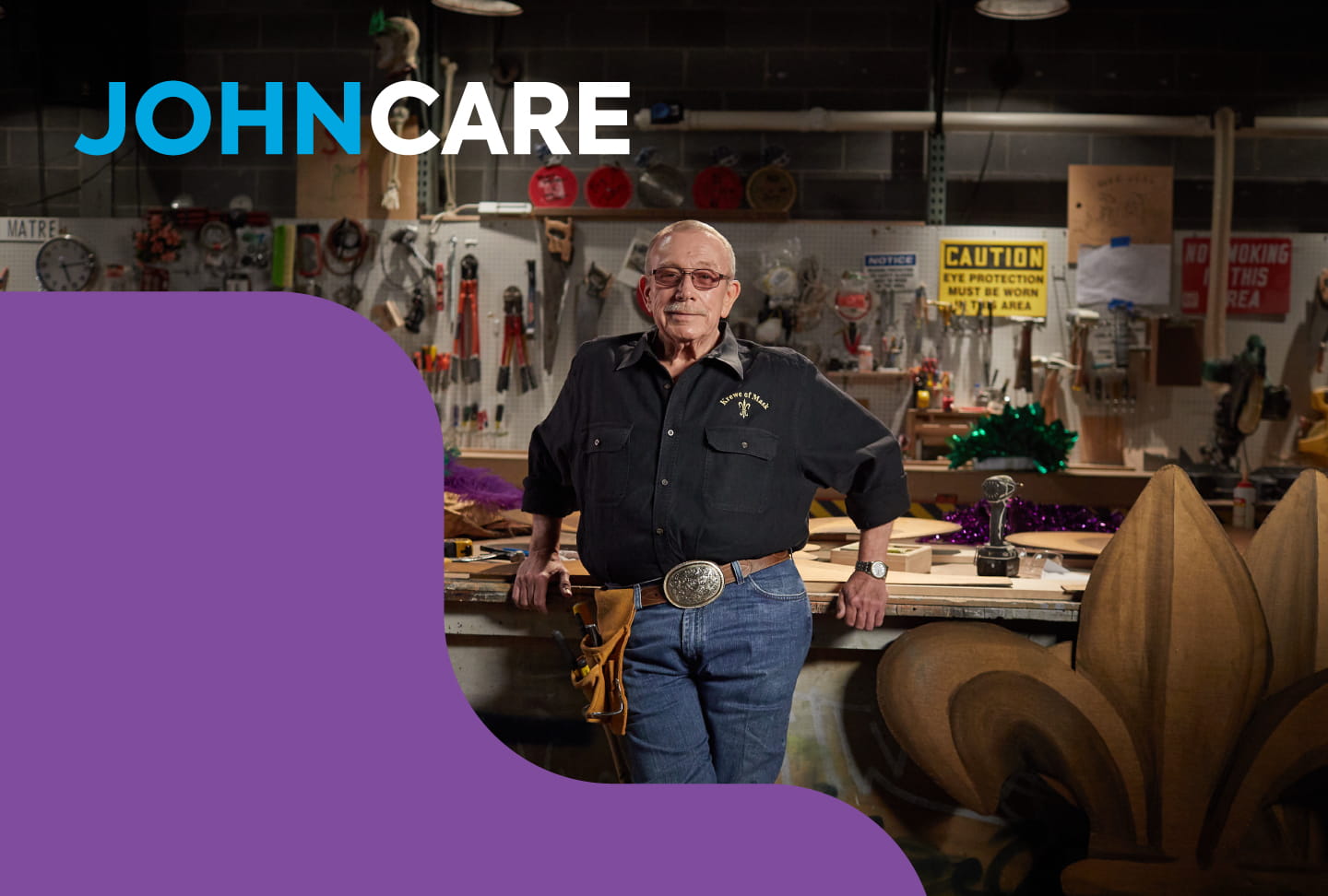At Wellstar, every cancer patient’s care plan is tailored just for their needs. When it comes to head and neck cancers, a team of expert specialists form an interdisciplinary care team that supports the patient and their family through the whole treatment process.
“The concepts are the same, but every case is different,” said Dr. Justin Hart, a Wellstar radiation oncologist. “Every patient’s situation is unique, so we need to fully understand the location and extent of their disease and then customize their treatment plan. This is why our multidisciplinary Head and Neck STAT Clinic is so critical for these patients. Only in a STAT Clinic can a head and neck surgeon and a radiation oncologist evaluate patients simultaneously.”
The Head and Neck Cancer Specialty Teams and Treatments (STAT) Clinic involves multiple specialists at once, giving patients and their loved ones the opportunity to get their questions answered in fewer visits. Patients and their families are involved in every decision, and their providers are right by their side.
“We work together as an interdisciplinary care team, and the patient sees that they have multiple specialists invested in their care,” Dr. Hart said. “It shows them that their doctors are thinking of them together, even if we may be interacting with them separately after seeing them as a team in the STAT Clinic.”
The STAT Clinic also speeds up diagnosis, staging and treatment. “We get answers faster, so we can help tailor that care plan much earlier. Then, the patient can start treatment sooner and get healthy,” said Dr. Timothy Ryan, a Wellstar ear nose & throat physician. “We know that earlier treatment improves outcomes for patients.”
Head and neck cancers, like many forms of cancer, are much more treatable if caught early, so it is important patients pay attention and contact their provider right away if they experience any symptoms.
What are the symptoms?
Head and neck cancers can present in many different ways. If you experience any of these signs, be proactive and reach out to your Wellstar provider so you can address the issue and find the cause.
In the mouth
- A white or red sore that does not heal on the gums, tongue or lining of the mouth
- Swelling in the jaw
- Unusual bleeding or pain in the mouth
- A lump or thickening
- Problems with dentures
At the back of the mouth (pharynx)
- Trouble breathing or speaking
- A lump or thickening
- Trouble chewing or swallowing food
- A feeling that something is caught in the throat
- Pain in the throat that won’t go away
- Pain or ringing in the ears or trouble hearing
In the voice box (larynx)
- Pain when swallowing
- Ear pain
In the sinuses and nasal cavity
- Blocked sinuses that don’t clear
- Sinus infections that do not respond to treatment with antibiotics
- Bleeding through the nose
- Headaches
- Pain and swelling around the eyes
- Pain in the upper teeth
- Problems with dentures
Dr. Ryan also recommends that if you’re a smoker and you have hoarseness for more than six weeks, you should see a Wellstar ear, nose & throat physician.
About twice as many men as women get head and neck cancers, and they are more common in people over the age of 50.
Although Wellstar’s expert providers are well-equipped to help you fight head and neck cancer, there are several steps you can take to prevent cancer from forming, including limiting exposure to the sun and cutting out tobacco and alcohol. Your Wellstar care team can work with you on a plan to keep your head and neck healthy and set achievable goals to prevent cancer. To learn more about head and neck cancer, see Wellstar’s guide to prevention, diagnosis, treatment and ongoing care. Learn more about head and neck cancer care at Wellstar or find a physician near you.




